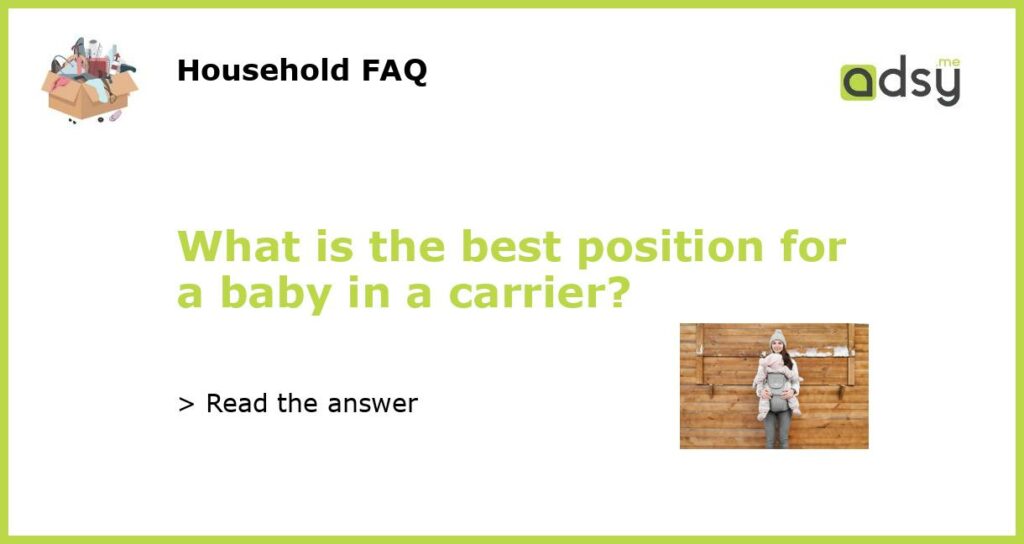The Importance of Choosing the Right Position for Your Baby Carrier
Using a baby carrier can be an incredibly helpful tool for parents to keep their little ones close while remaining hands-free. However, it’s important to keep in mind that not all positions are created equal when it comes to your baby’s comfort and safety. Here are some tips on how to find the best position for your baby in a carrier:
Position 1: Facing Inward
One popular position for babies in a carrier is facing inward towards the parent’s chest. This position is recommended for younger infants who need support for their head and neck. It’s also great for bonding with your baby and facilitating breastfeeding. However, as your baby grows, facing inward may become uncomfortable and restrict their movement. To avoid this, make sure to choose a carrier with adjustable buckles and straps to accommodate your baby’s increasing size.
Position 2: Facing Outward
Some carriers allow for a facing outward position, where the baby is looking forward away from the parent. This position is suitable for older infants with good head and neck control. It can be an exciting way for your baby to see the world around them and engage with their surroundings. However, it’s important to limit the time your baby spends in this position since it can cause overstimulation and be tiring for your baby.
Position 3: Hip Carry
A hip carry position involves carrying your baby on your hip with the carrier’s support. This position is great for older infants who want to look around and engage with their surroundings. However, it’s important to note that carrying your baby on one hip can put a strain on your back and hips. Make sure to switch sides frequently and choose a carrier with a wide and padded waistband for added support.
Position 4: Back Carry
A back carry position involves carrying your baby on your back using the carrier’s support. This position is recommended for older infants and toddlers as it allows for maximum freedom of movement and can be less tiring for the parent. However, it requires practice and may not be suitable for parents with back problems. It’s also important to choose a carrier with proper back support to avoid straining your spine.
Position 5: Listen to Your Baby
Ultimately, the best position for your baby in a carrier is the one that they are most comfortable and happy in. Pay attention to their cues and adjust the carrier as needed to ensure their safety and comfort. Remember that every baby is different, and what works for one may not work for another. Consult with a babywearing expert or your pediatrician if you have any concerns or questions about your baby’s carrier position.






